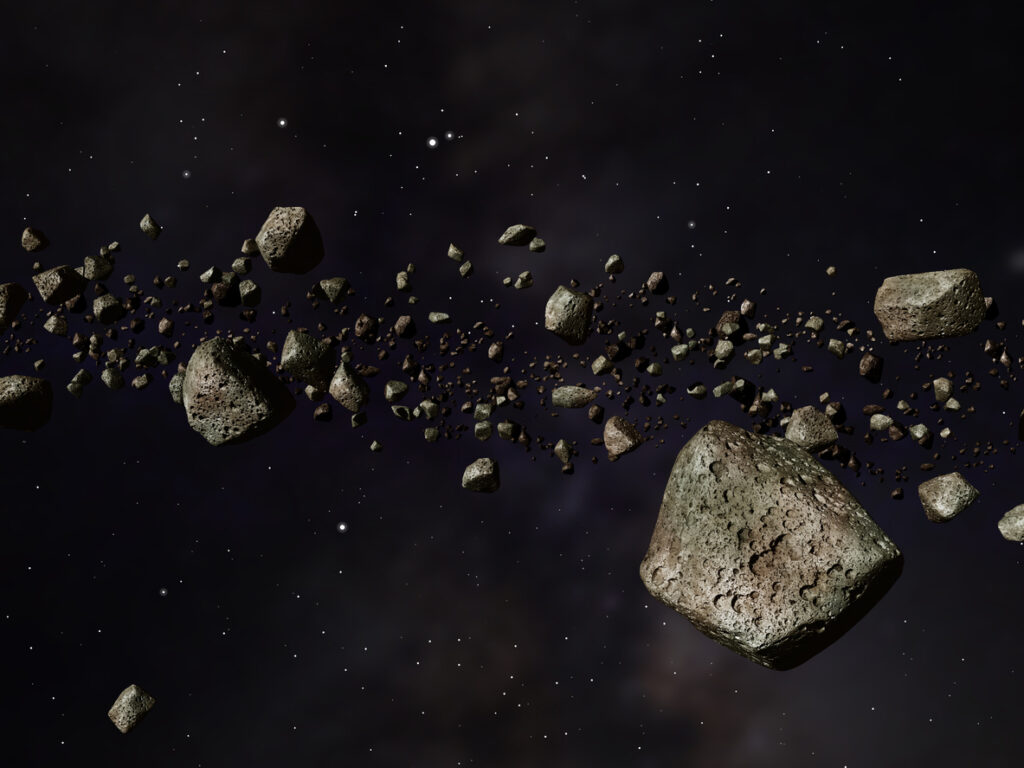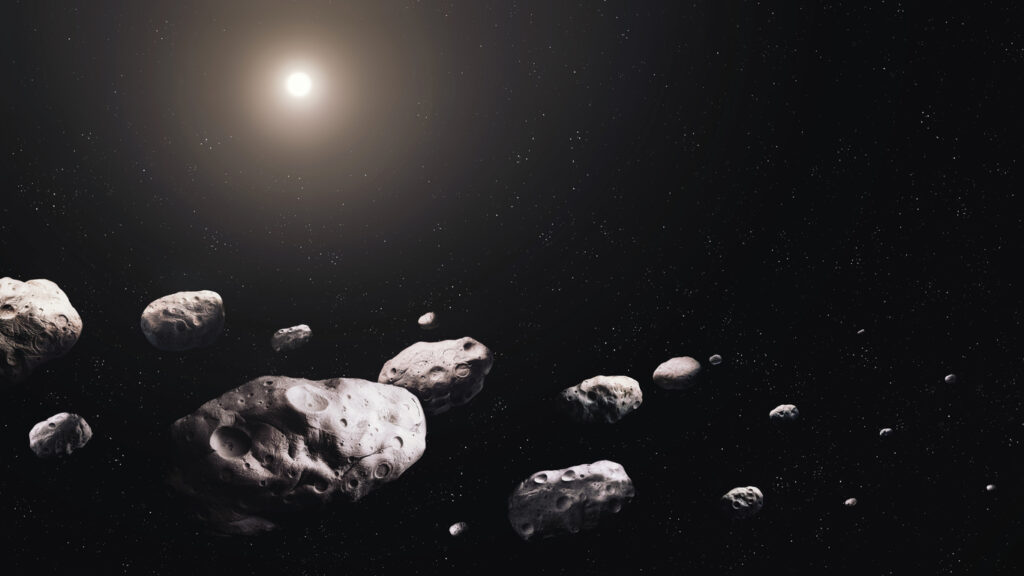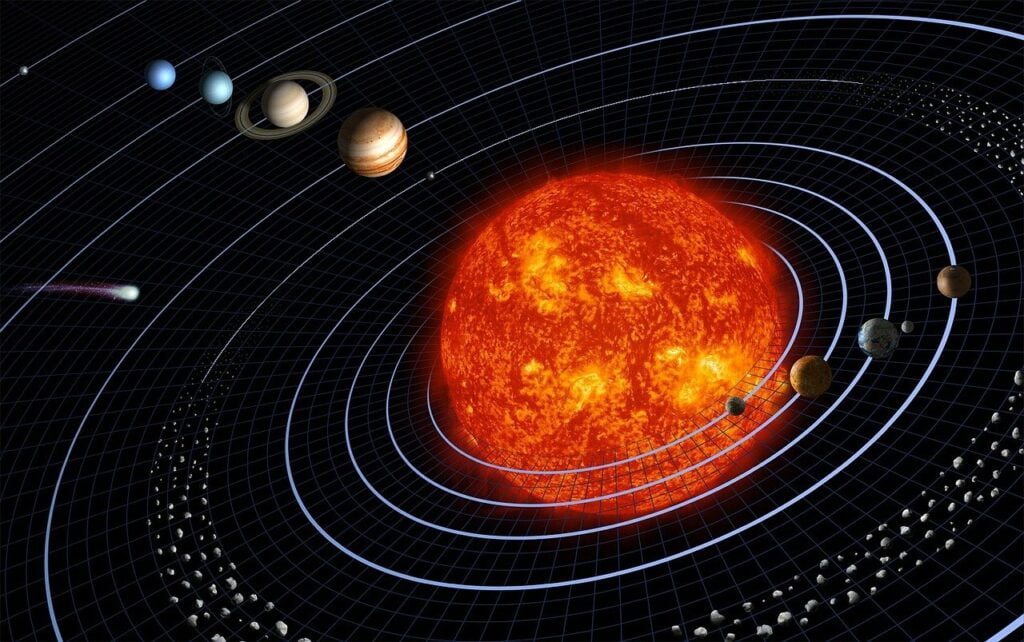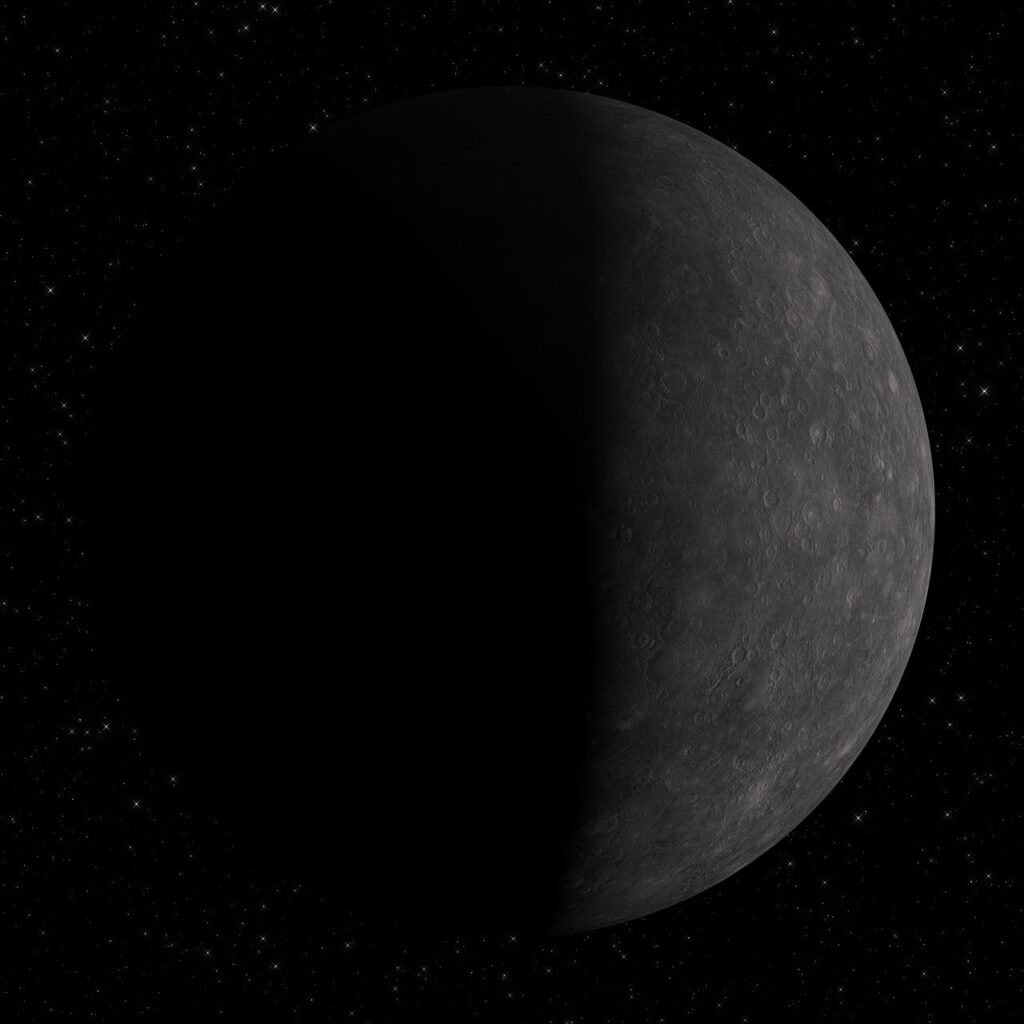
Introduction
Beyond the orbit of Neptune, in the frigid depths of the outer solar system, lies a vast reservoir of icy bodies known as the Kuiper Belt: A Frozen Relic of the Solar System. Resembling a flattened disk or a doughnut, the Kuiper Belt is home to countless icy objects, including dwarf planets, comets, and smaller bodies. These icy bodies, remnants of the early solar system, play a crucial role in understanding the formation and evolution of our cosmic neighborhood.
Location and Structure
The Kuiper Belt spans an immense region of the outer solar system, extending from approximately 30 to 50 astronomical units (AU) from the Sun. To put this in perspective, one AU is the average distance between Earth and the Sun, so the Kuiper Belt extends about two-thirds of the way to the orbit of Pluto, a dwarf planet considered one of its most prominent members.
The Kuiper Belt is not a monolithic structure; it is compartmentalized into distinct regions, each with its unique characteristics:
- Classical Kuiper Belt (CKB): This region, the most populated in the Kuiper Belt, contains objects with relatively circular orbits that lie within the belt’s main plane.
- Resonant Kuiper Belt Objects (KBOs): These objects share a special relationship with Neptune’s gravitational pull, leading to their orbits being perturbed by the giant planet. The most prominent examples are objects in 3:2 resonance, their orbits completing three revolutions for every two orbits of Neptune.
- Scattered Disk Objects (SDO): These objects have highly eccentric orbits, often extending far beyond the Kuiper Belt’s main boundaries, due to interactions with Neptune’s gravity.
- Detached KBOs (DKB): The most distant inhabitants of the Kuiper Belt, detached KBOs have even larger orbits than scattered disk objects, ranging from over 50 AU to the edge of the heliopause, the boundary marking the solar system’s influence on the surrounding interstellar medium.
Formation and Origins
The Kuiper Belt is believed to have formed alongside the rest of the solar system, originating from the solar nebula, a vast disk of gas and dust that surrounded the Sun as it condensed from a giant molecular cloud. As the solar nebula cooled and condensed, it eventually coalesced into the Sun and the planets, leaving behind a residue of icy bodies in the outer regions.
Neptune’s gravitational influence played a significant role in shaping the Kuiper Belt. As the young Neptune migrated inward, it perturbed the orbits of surrounding objects, sending some on eccentric trajectories and others into the Oort Cloud, a vast reservoir of icy bodies even farther from the Sun.

Scientific Significance
The Kuiper Belt holds immense scientific significance, serving as a treasure trove of information about the formation and evolution of our solar system. Studying these icy bodies provides insights into the early conditions of the solar nebula and the processes that shaped the planets we know today.
The Kuiper Belt is also a potential source of comets, icy bodies that periodically approach the Sun, releasing their icy material as tails of gas and dust. Comets are thought to originate from the Kuiper Belt and the Oort Cloud, providing a glimpse into the solar system’s distant past.
Composition and Characteristics
The Kuiper Belt is a vast region of icy bodies that extends from the orbit of Neptune to about 50 astronomical units (AU) from the Sun. It is a remnant of the early solar system, and its composition and characteristics provide valuable insights into our planetary origins.
Icey Composition
The vast majority of Kuiper Belt objects (KBOs) are composed of frozen ices, such as water, methane, and ammonia. These ices formed when the solar system was young and the Sun was surrounded by a disk of gas and dust. As the Sun heated up, the gas dispersed, leaving behind a ring of icy planetesimals that eventually evolved into the Kuiper Belt.
Diverse Bodies
KBOs exhibit a remarkable diversity in sizes, shapes, and colors. Some are small, comet-like bodies, while others are large enough to be considered dwarf planets, such as Pluto and Eris. Their shapes range from spherical to elongated, and their colors vary from icy white to reddish brown.
Color Variations
The color variations in KBOs are thought to be due to the presence of different ices and organic compounds. For instance, methane ice appears white, while organic compounds like tholins can give objects a reddish hue. The color and composition of KBOs can provide clues about their formation and evolution.
Moons of KBOs
Some KBOs have moons, which suggests that they may have undergone some form of geological activity in the past. These moons are thought to have formed from the same material as their parent bodies, but they may have also captured smaller objects during close encounters.

Exploration and Observations
Kuiper Belt: A Frozen Relic of the Solar System remained largely unexplored until the 1990s, when astronomers began using increasingly powerful telescopes to detect faint objects beyond Neptune. Since then, hundreds of KBOs have been discovered, and our understanding of this region has grown significantly.
Pioneer Discoveries
The first major breakthrough came in 1992, when David Jewitt and Jane Luu discovered 1992 QB1, the first known KBO beyond Pluto. This discovery sparked a surge of interest in the Kuiper Belt, and many more objects were soon identified.
NASA’s New Horizons Mission
A significant milestone in Kuiper Belt exploration was the launch of NASA’s New Horizons spacecraft in 2006. New Horizons made history in 2015 by flying past Pluto, providing the first close-up images of this dwarf planet and its moons.
Ongoing Observations
Our exploration of the Kuiper Belt continues with ground-based and space-based telescopes. Ground-based telescopes, such as the Subaru Telescope in Hawaii, are capable of detecting faint KBOs in the faint twilight sky. Space-based telescopes, such as the Hubble Space Telescope, can provide more detailed observations of these objects.
Scientific Significance
Studies of KBOs provide invaluable insights into the formation and evolution of the solar system. Their ices contain clues about the early conditions in the solar nebula, and their orbits provide information about the gravitational interactions that shaped the solar system.
Life Beyond Earth
Some scientists believe that the Kuiper Belt could harbor life beyond Earth. The icy conditions and potential for organic compounds in some KBOs suggest that it might be possible for extremophiles to survive in these environments.
Remaining Mysteries
Despite our growing understanding of the Kuiper Belt, many mysteries remain. We still don’t fully understand its overall structure, composition, and potential for harboring other dwarf planets. Future missions and observations are crucial to unraveling these remaining secrets.
Future Exploration
Several missions are planned to explore the Kuiper Belt in the coming years. The Japanese spacecraft OSIRIS-REx is currently on its way to the asteroid Bennu, but it will also make flyby observations of two KBOs. The European Space Agency’s JUICE mission is also slated for launch in the next decade, with the goal of studying Jupiter’s icy moons and exploring the region beyond Pluto.
Conclusion
Kuiper Belt: A Frozen Relic of the Solar System is a fascinating and scientifically important region of our solar system. Its icy bodies hold clues to our planetary origins and the possibility of life beyond Earth. As we continue to explore this region, we are bound to uncover even more mysteries and deepen our understanding of the cosmos.
You may also like
Mercury: The Closest Planet to the Sun
Venus: The Earth’s Twin or a Very Different Planet?
Mars: Comprehensive Exploration, unveiling the Mysteries
Jupiter: A Cosmic Giant – Symphony of Storms
Saturn: A Gaseous Giant with Enthralling Rings and Diverse Moons
Useful links
Jet Propulsion Laboratory (JPL) – Kuiper Belt: https://science.nasa.gov/solar-system/kuiper-belt/
European Space Agency (ESA) – Kuiper Belt: https://www.esa.int/ESA_Multimedia/Images/2014/12/Kuiper_Belt_and_Oort_Cloud_in_context
National Aeronautics and Space Administration (NASA) – Kuiper Belt Objects (KBOs): https://science.nasa.gov/solar-system/kuiper-belt/
NASA’s New Horizons Mission: https://science.jpl.nasa.gov/projects/newhorizons/
European Southern Observatory (ESO) – Kuiper Belt: https://supernova.eso.org/exhibition/images/0319_B/


